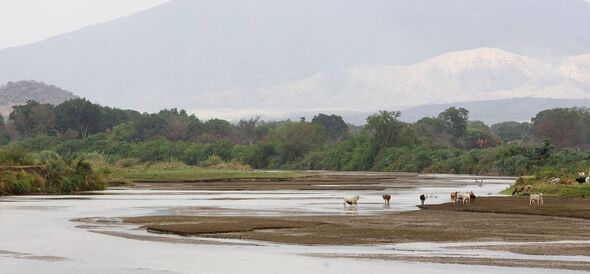Ongota is a language belonging to the Afro-Asiatic family and is spoken by the Ongota hunter-gatherer community, which is based in a small village in southwest Ethiopia.
In 2012, UNESCO reported that out of a total ethnic population of 115, only 12 native speakers, all elderly remained. That number is likely to have decreased in the 14 years since then.
The Ongota are members of one of the remaining hunter-gatherer communities in Ethiopia and northeast Africa, in an area now dominated by pastoralists – sheep or cattle farmers.
The community lives in the village of Muts’e on the left bank of the Weyto river, just over a mile from the main road.
They hunt, collect plants in the bush, fish and have no cattle herds. However, due to increased pressure from neighbouring pastoral communities, they produce some sorghum (grown as a cereal and animal fodder) and keep some chicken, sheep and goats. They also produce and sell bananas and honey, according to the Endangered Languages Archive.
The rest of the village has adopted the Tsami language instead, another Afro-Asiatic language spoken in Ethiopia.
Ongota, also known as Birayle by their neighbours, is not understood to be taught in schools or used by children, thus the language is described as a “moribund” or endangered language. The younger generation sees the language as a difficult and strange language, according to research from 2006. As a result, it is likely to die out when its last native speakers pass away.
The language is said to defy classification and is considered an isolate, meaning it has no genetic relationship to any other language and does not belong to any language family.
One of the main reasons for its status is due to marriage. Research dating from the early 1990s notes that many Ongota men have married Tsamakko women, with their children growing up only learning the language of their mothers.
According to Mole Sagane, one of the elders, the people of his generation were taught Ongota as their mother tongue. However, once they came into contact with the Tsamakko, they felt a sense of social inferiority which was reflected in their language. To improve their image, they learned their language and then passed it on to their children, which gradually replaced Ongota for everyday communication.
Today, Ongota is still a good means to talk among elders whenever they do not want to be understood, according to Mole Sagane.
According to the ELA, the community are aware that they have started “killing” their native language but they also still consider Ongata as a symbol of their ethnicity. They also express an eagerness to enhance the use of the language and complain about the linguistic behaviour of the younger generation.
There are currently 2,470 languages considered to be in danger of extinction by UNESCO. This includes Njerep, which is spoken by the Mambila people located between eastern Nigeria and northwest Cameroon.
According to the ELA, it is believed there are only four people left in the world who speak it, all over the age of 60. Even those who can speak Njerep no longer use it daily, instead it is used “for joking or if they don’t want to be understood by others,” the ELP said.
